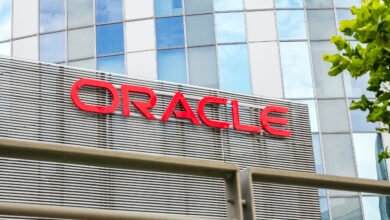DeepSeek AI Challenges High-Cost Compute Paradigm

▼ Summary
– DeepSeek’s R1 model disrupted the AI industry by achieving comparable results to tech giants at a fraction of the cost, emphasizing efficiency over compute power.
– The company innovated under U.S. chip restrictions by optimizing existing hardware and leveraging parallelization, challenging the narrative of severe disadvantage.
– DeepSeek used synthetic data and model distillation for training, a pragmatic approach that raised data privacy concerns but demonstrated cost-effective performance.
– OpenAI and other industry leaders shifted strategies in response to DeepSeek’s rise, with OpenAI announcing an open-weight model and pursuing massive funding.
– DeepSeek’s advancements accelerated trends like test-time compute and autonomous AI critique systems, though these innovations carry risks of misalignment and bias.
The AI industry is undergoing a seismic shift as DeepSeek challenges traditional high-cost computing paradigms with groundbreaking efficiency. When the company unveiled its R1 model earlier this year, it wasn’t merely introducing another AI system, it was rewriting the rules of the game. By achieving performance comparable to industry giants at a fraction of the cost, DeepSeek forced a fundamental reevaluation of how AI development should approach resource allocation.
What sets DeepSeek apart isn’t radical innovation but exceptional execution of existing concepts under constraints. Facing U.S. export controls on advanced chips, the company optimized available hardware through clever parallelization strategies. Reports indicate its R1 model matches OpenAI’s capabilities while operating at just 5-10% of the cost, a staggering efficiency gain. Training its V3 predecessor reportedly cost only $6 million, a figure industry veterans described as laughably small compared to Western competitors’ budgets. When OpenAI spent $500 million on its Orion model, DeepSeek outperformed it on benchmarks for just $5.6 million.
The secret lies in DeepSeek’s pragmatic approach to both hardware and data. While U.S. firms chased raw computing power, the company focused on maximizing existing resources through architectural innovations. Its use of synthetic data and model distillation techniques, learning from other powerful models, represents a significant departure from conventional Western practices. This approach carries potential privacy concerns but demonstrates DeepSeek’s results-driven philosophy.
Transformer-based models with mixture-of-experts architectures, like DeepSeek’s, handle synthetic data particularly well. Traditional dense architectures can suffer performance drops or even collapse when trained extensively on synthetic content. By designing its system specifically for synthetic data integration from the outset, DeepSeek avoided these pitfalls while capitalizing on synthetic data’s cost advantages.
The market impact has been immediate and profound. OpenAI’s recent pivot toward open-weight models and Sam Altman’s admission that the company was “on the wrong side of history” regarding open-source AI suggest DeepSeek’s influence. With OpenAI reportedly burning $7-8 billion annually, the economic pressure from efficient alternatives has become undeniable. Even OpenAI’s massive $40 billion funding round can’t mask the fundamental challenge, its approach remains vastly more resource-intensive.
Beyond cost savings, DeepSeek is pioneering new frontiers in AI autonomy. Its collaboration with Tsinghua University on self-principled critique tuning (SPCT) represents a bold step toward systems that self-evaluate during operation rather than simply growing larger during training. While promising, this approach raises important questions about alignment and transparency when AI begins judging its own outputs without human oversight.
Industry responses highlight DeepSeek’s disruptive influence. Microsoft has adjusted its data center strategy toward more distributed, efficient infrastructure despite planning $80 billion in AI investments. Meta’s latest Llama 4 release directly benchmarks against DeepSeek models, a telling acknowledgment of their competitive standing. Ironically, U.S. sanctions meant to maintain American dominance may have accelerated the very innovation they sought to contain by forcing DeepSeek to develop alternative approaches.
As the AI landscape evolves, adaptability will separate leaders from followers. Whether through policy changes, technological breakthroughs, or market shifts, the ability to learn and respond quickly will determine success. DeepSeek’s story demonstrates that in AI development, constraints can breed creativity, and efficiency can be as powerful as raw computing power. The industry’s future likely lies in balancing both approaches rather than choosing between them.
(Source: VentureBeat)



